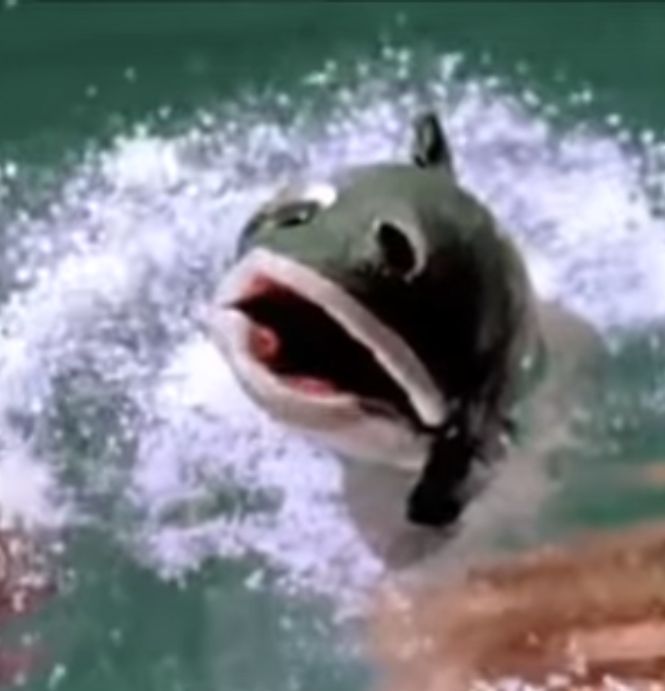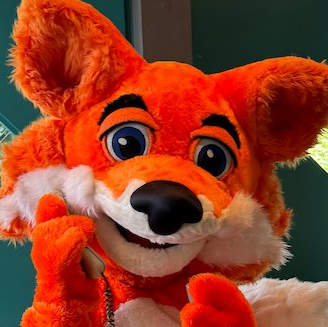Intellectual Property is theft of The Commons. The Library of Babel belongs to us all.
The library of babel site is a bit of a pet peeve of mine. It doesn't quite do what it claims.
But yeah, IP is still theft of the commons. no one creates anything on their own.
It doesn’t quite do what it claims.
No? How so? I know the concept is solid, though obviously we'd have to bump up the number of characters to catch all possible permutations. I figured out the concept when I was younger but I used binary in my thought exercises as a catchall. It actually occurred to me when I was writing a subdomain bruteforcer like 20 years ago. Was a major step to me realizing the bullshit of IP and moving further left.
the "library of babel", such as it is, is a two way hash algorithm. restated, the claim of the library of babel is "if you give me a piece of text, I can generate a corresponding hash of that text". which doesn't sound as cool as all the flowery language about Borges and whatnot that fills the website.
You don't "search" the library for text in the way that he wants people to imagine you do. The site takes your input string and hashes it to return an output string. Put another way, we could say that every piece of text is located at the index represented by itself. but that we be a lot less "cool". So the site does a pointless hash function to make it look like you've "found" the text within the library.
EDIT: a much better way to put it is that it claims to generate text randomly. but if your random "seed" is the same size as your generated output, then that's a hash.
Ah, gotcha. I'm not too familiar with the workings of the the site itself just the knowledge that all information already exists within a phase space and we provide context to it. Thanks for the insight.👍
of course, no worries. sorry for raining on your parade, so to speak. enjoying things is cool and good.
Oh, no. Totally cool. I'll probably keep pointing to it until I can find a better example, but it's good to know. I was just looking at the about page and saw that I also missed the mentioned of Borges right wing leanings. All the more reason to find (or build) something else that illustrates the concept. I seem to remember there was a site way, way back in the day that was generating all the pixel color permutations of a fixed size jpg, and someone recently-ish public domain-ed all possible chord combination possibilities, so there's totally other ways of demonstrating it all.
this picture on the website is cool though https://libraryofbabel.info/img/desmazierescolor.jpg
This is my biggest problem with NFTs. I actually see value in the tech for things like central planning if they can ever find a way to reduce the environmental costs, but creating artificially scarce digital goods is the dumbest possible use case. Art - as in, the creative pursuit - is dope, but art under international finance capitalism is one of the biggest grifts of all time.
Who in their right mind would pay $1M for an internet meme that will be stale by the time their transaction completes? Who would pay $10M for a painting when you could make a high-res scan at your local print and copy shop for whatever crumpled bills you have in your pocket? The "value creation" comes exclusively from its use as an instrument for laundering large sums of money.
Thought you were talking about internet protocol for a minute and was still nodding along
If your art is out there... Your art is out there.
Accept it. You can not control what happens to your art once it is out there. It may become its very own lifeform when repurposed as a meme or it may not. Just accept that your thoughts and creations as a human get consumed by other humans and become the basis for their thoughts and creations, it's how humanity works. Trying to control that is literally counter to our humanity.
Even when they explain their intent it doesnt make any sense, it just comes off as wishful thinking by guys who dont understand or dont want to understand that what became of their creation is what would probably always become of it.
They acknowledge that there is literally no difference between an "initial creation" of a work and the 2nd or 10 billionth copy of that work, yet they still go "Separating the initial creation from mere copies confers power" without providing any argument for why besides just the same smokescreen used by NFT grifters to insist that NFTs are worthwhile. Theres just no reasons or logic provided for why you should be optimistic about this like these guys are unless you dont understand the reality, dont want to understand the reality, or want to make money from grifting off it.
Contrary to the common wisdom "you can't shit a shitter", grifters and bullshiters have actually been shown to be more susceptible than average to scams/BS.
Yeah, I don't want to be too elitist here but I genuinely wonder if the socialist framing of private property (as opposed to a more idealist kind like many liberals seem to have) kind of immunizes you against being duped by this.
I don't know if its ideology (trying to square the sentimental value of "owning" something "unique" with the circle of capitalism dissolving everything sacred into vapid mass produced commodities) or speculation (trying to infuse an intrinsically worthless commodity with immense amounts of fictitious value in order to profit off some suckers who buy it) but yeah its something stupid.
The lack of understanding of historical materialism that is a result of suppressing socialism in the educational system in the west has been an utter disaster. Ironically enough it has even hindered the capitalists.
You can't just ignore basic facts of material reality unless you want to keep running into the same pitfalls over and over and over.
:jesse-wtf:
The idea behind NFTs was, and is, profound. Technology should be enabling artists to exercise control over their work, to more easily sell it, to more strongly protect against others appropriating it without permission.
Making something infinitely reproducible (storing it online) and then showing it off publicly (putting it online), defeats this purpose.
:jesus-cleanse:
Decades from now, how will anyone verify whether the linked artwork is the original?
hopefully no one will give a shit
same vibes as that episode of Star Trek TNG where the unfrozen business tycoon is worried about his investments
Being able to separate an artist’s initial creation from mere copies confers power
So he tried to undo the democratisation of digital art by giving it its intangible 'aura' back, and he's surprised that it immediately became a rich man's grift?
the web address of an image, or perhaps a mathematical compression of the work, and use it to reference the artwork elsewhere.
like how did they end up going with links, NFTs would make more sense(but still ridiculous regardless) if they were a hash of the image data, not a link to a probably third party image hosting site that can change
My first guess would be that they just wanted something simple and easy to demonstrate to rubes, so a link you can just click or copy paste is a lot more friendly to non-nerds than a hash or some other more techy form.
Wait so just to be clear, NFTs are an encoded version of the web address where it's hosted? Or something else?
Yep interestingengineering.com/nfts-are-mysteriously-disappearing-heres-how
Before understanding how NFTs get lost you must understand how NFTs work. A non-fungible token can be anything ranging from jpeg images to digital artworks and short videos, and their value depends on the interest that people have in them. When a person buys an NFT, they are not getting anything an actual image, or even the rights to an image, but rather a digital code that points to a piece of media located somewhere on the internet.
The digital artworks themselves are not located or registered on the blockchain. Rather, when an NFT artwork is purchased, the buyer gets a cryptographic signature, or certificate, that points to an image hosted elsewhere. The actual item could be located anywhere on the internet, and the NFT effectively serves as a digital pass for that internet address where the media file (image, video, etc.) is stored.
Pretty silly
So to be totally clear, because I'm not super tech savvy, if the hosting site goes down the NFT effectively becomes a link pointing to nothing?
so is turning the planet to ash for the fleeting benefit of a tiny handful of people, but here we are
If you really want to understand the whole thing the Folding Ideas video Line Goes Up is a great, if a bit long, breakdown.
The short of it though is that if it seems nonsensical and you don't understand it you already understand it more than most of its proponents. The more you learn about NFTs and crypto the stupider it gets.
Yeah, Etherium is so mind-bogglingly inefficient that they can't save something as large as an actual image on the blockchain.
But then how would we verify that image data? The artwork would have to be re-scanned in a cradle full of identical sensors under identical conditions, and even if that were possible, degraded bits of pigment or a little scuff somewhere are going to throw the hash off again. Chunked hashes could help since it probably wouldn't be a deal breaker if not every chunk checked out, but I still wonder if getting pictures remotely deterministic enough to do something like this could ever be possible.
NFTs can only(practically) reference a web address of an image file etc, not an actual physical painting (in that case i suppose the NFT would be supposed to represent ownership of a specific scan/photo of it)
We’ve achieved the future where they’ll run every tech idea, even if proven a terrible one, if it makes or protects some rich asshole’s money
They may have come up with the current iteration but the idea of tokenizing people's data in order to monetize it and undermine privacy movements was being pushed by Jaron Lanier years earlier in his book Who Owns The Future.
Tumblr reblogs as blockchain combined with tineye or similar to say art “at uploading time” Can’t be found anywhere online.
I've been meaning to look into cryptographic watermarks just so I can embed messages like "if this is an NFT you got scammed lmao" into images.











